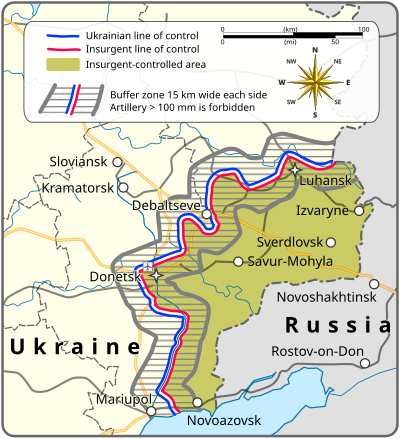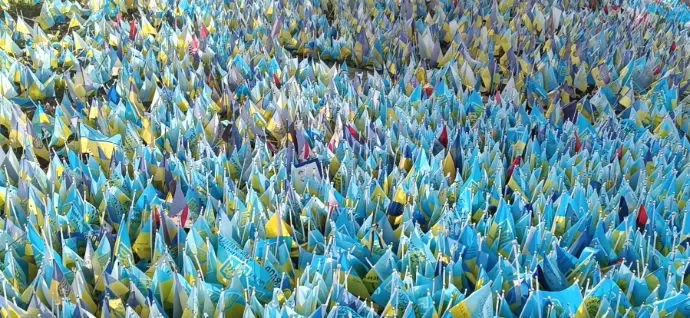A Brief History Leading Up to the War in Ukraine
References:
1. The Wall Street Journal, The Editorial Board, A Brief History of Broken Russian Promises to Ukraine. Feb. 23, 2025.
2. Wikipedia: Minsk agreements.

Searching for Peace in Ukraine
Marking the third anniversary of Russia's unprovoked invasion on Ukraine, Russia launched its largest drone assault since the onset of the full-scale war, deploying 267 attack drones across 13 regions. The assault resulted in civilian casualties and extensive damage to infrastructure.
The anniversary is a good moment to recall the post-Cold War history of Russia's broken promises.
Key Events Leading to the War in Ukraine
A brief history of broken Russian promises to Ukraine
The Budapest Memorandum on Security Assurances
The illusion of the “end of history.” Ukraine yielded its nuclear weapons in exchange for security guarantees from the U.S., U.K. and Russia. Moscow explicitly promised to respect Ukraine’s sovereignty and territorial integrity and refrain from economic coercion. So much for that, and here’s a trail of Russia’s other broken commitments.
Ukraine's Territorial Violation by Russia
In 2003 Russia began building a dam on the tiny Ukrainian island Tuzla without warning or permission from Kyiv. Ukraine responded to this territorial violation by deploying troops, and the crisis diffused only after Ukrainian President Leonid Kuchma struck a compromise with Mr. Putin on terms favorable to Moscow.
Energy Extortion to Draw Kyiv into Russia's Orbit and Block of Ukrainian's Exports
After Tuzla, Ukraine sought to deepen political and economic ties with Western Europe. Moscow resorted to energy extortion to draw Kyiv into its orbit and weaponized its trade ties with Ukraine. In 2013 Moscow blocked Ukrainian exports at the border while offering financing for the Ukrainian government as an inducement for closer ties.
Ukrainian then President Viktor Yanukovych succumbed to this economic coercion and withdrew from a political association and free-trade agreement with the European Union in November 2013. That prompted mass protests in Ukraine. Mr. Yanukovych abdicated and fled to Russia in February 2014.

Seizing of Crimea and Fueling the Separatists' War in Donbas Region
Russia responded in 2014 by sending troops in disguise to seize Crimea and the strategic port of Sevastopol. The same year it armed pro-Russian separatists who launched a war in Ukraine’s eastern Donbas region and seized much of two eastern provinces.The Kremlin claimed its military wasn’t involved in the fighting in eastern Ukraine, but that wasn’t true. In one prominent example, nearly 300 Russian military vehicles were spotted in and around the Donetsk provincial city of Ilovaisk in summer 2014.
Ukrainians seeking to liberate Ilovaisk were surrounded in August 2014 by Russian forces. Mr. Putin personally called for a “humanitarian corridor” so the Ukrainian troops could retreat to safety. But after Ukrainians laid down arms, the Russians ambushed and slaughtered more than 360 retreating soldiers.
Russia seized the military initiative in eastern Ukraine after Ilovaisk, but Barack Obama refused lethal aid for Ukraine while Washington and Europe pushed Kyiv to negotiate a cease-fire. Ukraine agreed, under U.S. and German pressure, to the Minsk I accord in late 2014 that promised a cease-fire. It didn’t hold and in early 2015 Ukraine agreed to Minsk II.
Russia later claimed it wasn’t a party to Minsk II, that the deal was only between Ukraine and the Russian separatists in the Donbas. Meanwhile, the Kremlin poured heavy weapons into the Donbas in preparation for what became the 2022 invasion.
Widespread Torture and Abuse Reported by Ukrainian Survivors of Russian Captivity
Ukrainian survivors of Russian captivity since 2014 have reported widespread torture and abuse. Moscow has signed the Geneva Conventions, which prohibit violence and abuse of prisoners of war.
Russian Invasion of Ukraine - Intended as a Lightning Strike to Decapitate the Government in Kyiv and then Control the Country
The Russian invasion that began in February 2022 was intended as a lightning strike to decapitate the government in Kyiv and then control the country. President Volodymyr Zelensky refused a U.S. offer to help him flee the country, and Ukraine’s forces repelled the siege of Kyiv. Russia then turned to its current strategy of assaulting civilian targets from the air while grinding out gains in the east amid enormous casualties.A Roadmap to a Peace Deal
The history teaches us that "Russia observes
two kinds of agreements: one that’s backed by power, or one that it’s in Russia’s interests.”
Unfortunately, Ukraine on its own does not qualify for either of these. Putin wants Ukraine to be a vassal state like Belarus. Had the Ukrainians quit fighting they'd be under Putin control by now.
This is why Ukraine needs credible security guarantees from Europe and the U.S. Another "cease-fire" - a Minsk III, would merely give Mr. Putin a respite to refinance his war machine after sanctions ease, rearm, and invade again later.

Stay Informed. Stay Truthful. Explore Credible Sources on Ukraine.
Connect with Ukrainian local communities and join our Dom Druha support groups on our community server.